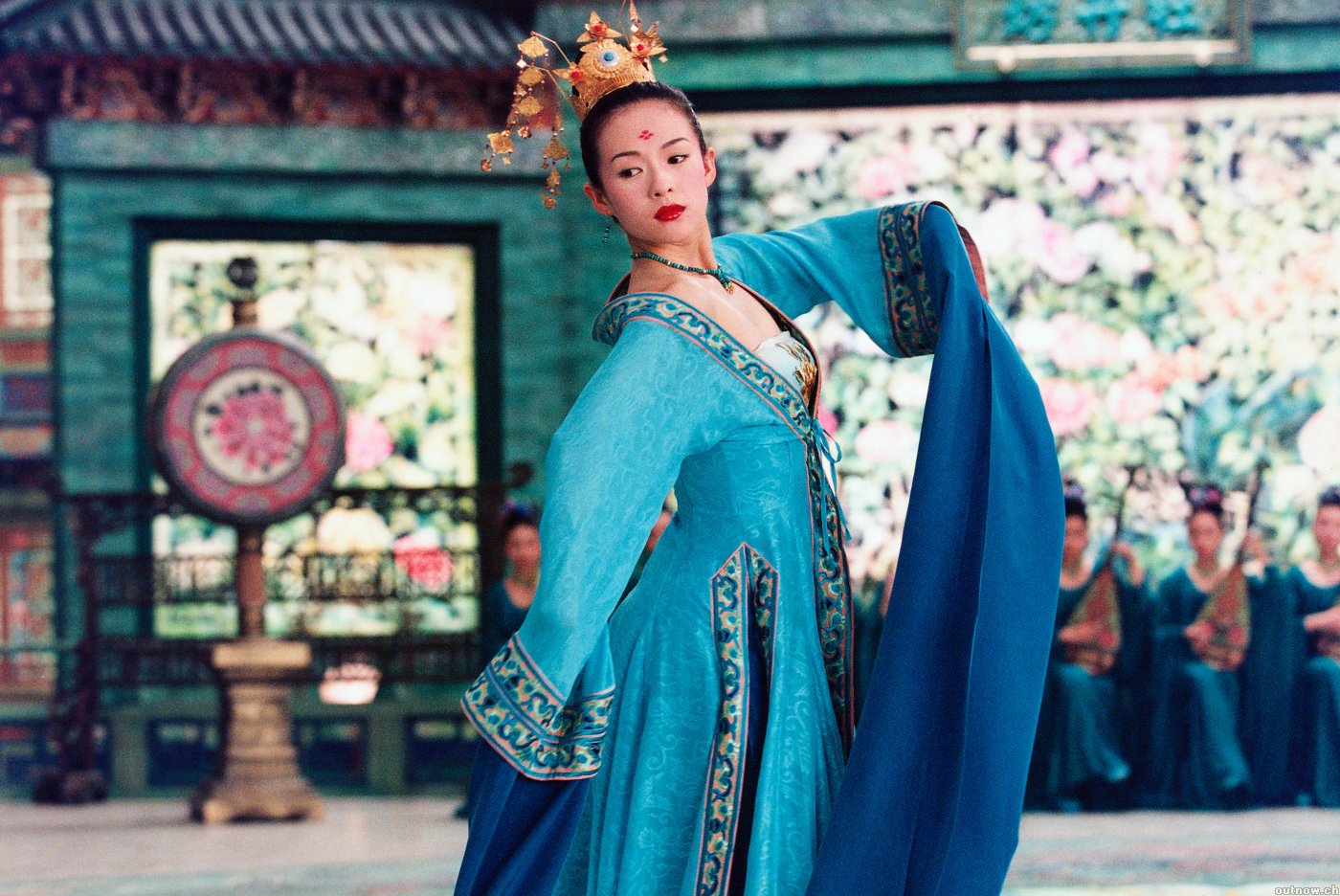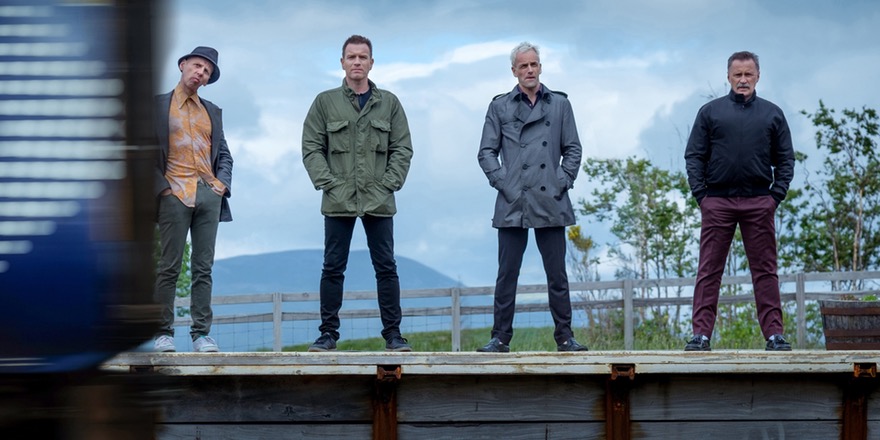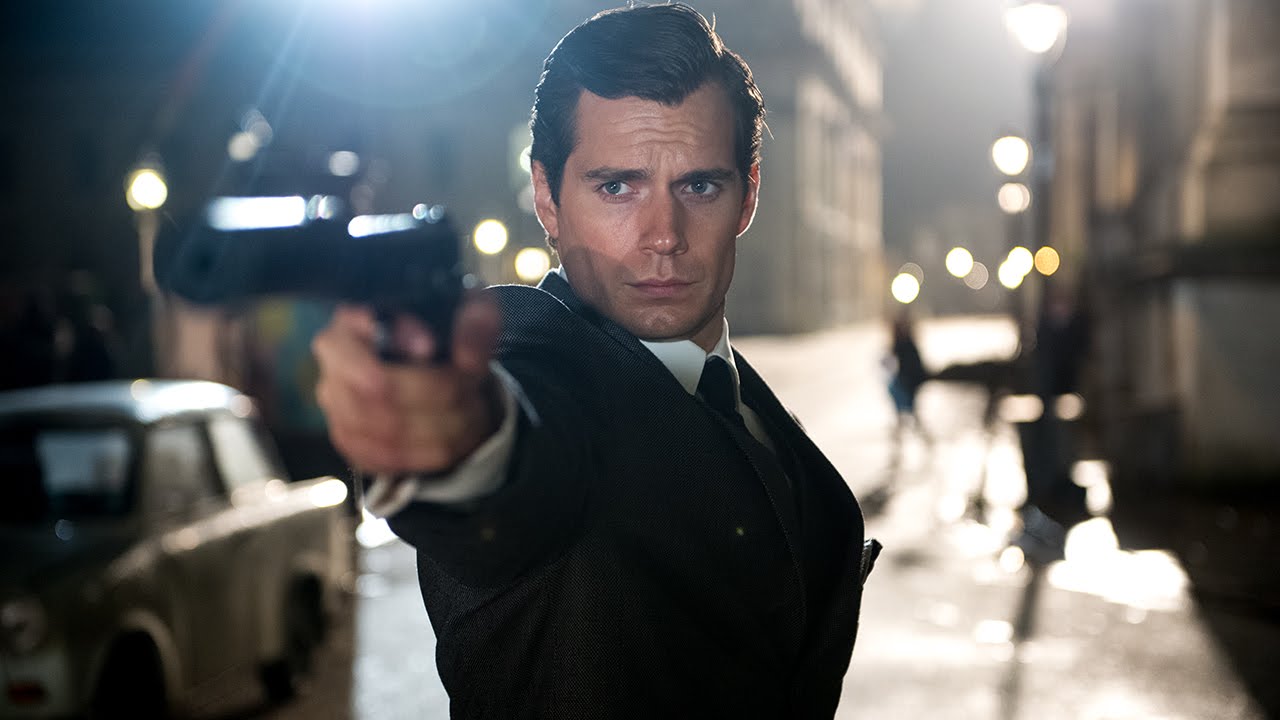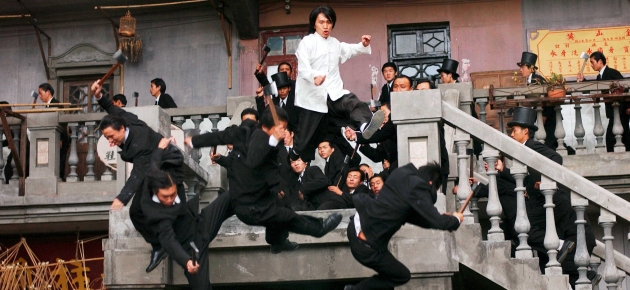
Cinema holds such a high position of importance in our culture because of its ability to make us feel such a great range of emotions. We respond to films differently because of what we take from them and how we view them.
Some films are simply cool. They have a style and a confidence about them; they want to entertain the audience and to make them smile and laugh. Sometimes, films try too hard to be something they are not and often they are worse because of that.
The coolest films make the process of filmmaking look easy; they avoid pretention and often do not carry much depth to them, yet they are a fundamental part of cinema because we do not always go to the movies to see great works of art; we may just want to spend a couple of hours having fun and unwinding and the coolest films whet the appetite when this is the case.
10. House of Flying Daggers

There is such beauty in the violence of House of Flying Daggers that the action sequences play out like dance numbers from musicals of classical cinema. Characters seem to float from one place to another, their movement offering comparison to the grace of a ballerina.
Alongside this comes such a sense of style and confidence in filmmaking that so much can be said with actions and not words. One scene combines a dance number with an assassination attempt to a breath-taking level- an entire sub-plot is played out virtually wordlessly. The surface of the film is astonishing to look at, and there is a satisfying depth in the relationship between the three main characters of the film.
Each of the three characters- Mei, Jin and Leo- radiate confidence in their own way, whether it is Mei’s silent assurance in herself or Leo’s brutish arrogant belief in his own abilities, watching three great egos playing off against each other is as cool as watching the combat sequences throughout the film.
9. Kill Bill: Vol 1

Quentin Tarantino may be a lauded screenwriter (despite the fact that all his characters manage to all speak like him), but his influences from varying aspects of cinematic history close to his heart drive his film’s visual style. Kill Bill: Vol 1 is an example of when Tarantino gets this mix right; his love for Asian and exploitation cinema comes to a head here, arming Uma Thurman’s Bride with a yellow jumpsuit reminiscent of Bruce Lee’s famous attire.
Kill Bill’s first instalment introduces a world that oozes style and nonsense, where people are allowed to carry swords onto planes and people seem to have endless quantities of blood seeping from wounds when they are inevitably dispatched. The absolute preposterousness of the events in the film only serve to make it a more enjoyable experience and Kill Bill: Vol 1 has a better visual aesthetic than most of Tarantino’s films and his confidence in pitting the Bride against the Crazy 88 results in an awe-inspiring sequence.
Tarantino has always been a director inspired greatly by his choice in music and that is no different here. Kill Bill was the first film of his to focus more on action than conversation, but it pays off in spades as the pace increases, the film’s animated flashback scene does not detract from the drama and the runtime feels like a breeze. Ultimately, the second part of Kill Bill was a monotonous bore that lessened the impact of the first, but this should not detract from the quality that volume one had to offer.
8. T2: Trainspotting

On the surface, defining T2: Trainspotting as cool might seem like a step too far; the film is a meditation on growing older and the changes (or lack thereof) that occur in people as their lives move apart and in new directions. The central narrative involving Spud’s continued addiction to heroin and the isolation that comes as a result is nothing short of desperately heart-breaking.
Danny Boyle balances the process of aging and the reminder of youth with a style that is akin to a pure adrenaline hit. The key to the success of Trainspotting was that it felt like the film itself was on drugs, that you were watching a trip that blasted forwards with an abundance of energy and it would only finish once the high had run its course.
T2: Trainspotting has sequences that remind the characters and audience of those days, and that they have ultimately run their course. The opening sequence with Renton on the treadmill, echoing the “Lust for Life” introduction of the first film, Begbie’s nightclub chase and the drug addled musings of Renton and Sick Boy have been directed in a way that mirrors the original but with a twenty-first Century sensibility. Nobody has ever wanted to be the characters in Trainspotting and its sequel, yet it cannot be denied that despite the darkness within, it is a riot to watch the film play out.
7. The Man From UNCLE

Guy Ritchie puts the horrors of post-war East Germany to one side to present a version of history that dispenses with darkness and focuses on flashy style. The visual style brings stunning birds-eye-views of cold-war Europe; Ritchie’s visual sensibility certainly overpowers his screenwriting works; fortunately, The Man From UNCLE does not give Ritchie a writing credit and the “lads humour” that he is associated with does not make an unwelcome appearance.
Casting Henry Cavill and Armie Hammer proved a masterstroke as the pair forge an initially uneasy alliance for the greater good, while aware of their mistrust for one another. Alicia Vikander brings strong presence as the woman in between the pair, whose homoerotic tension overpowers any “damsel in distress” possibilities the narrative may throw her way.
Credit must also go to Daniel Pemberton, who disregards the 1950’s setting and brings a contemporary musical style to proceedings, the quieter moments reminiscent of early James Bond scores, while the action sequences mix flute scores with rock and roll to create a sense of fun that makes you look past the messy plot contrivances in favour of sheer entertainment.
6. Kung Fu Hustle

Stephen Chow’s follow-up to Shaolin Soccer injects a much-needed sense of frivolity into the martial arts genre. The film wears its references on its sleeve, with Chow’s western influences shining through, mostly for comic effect. The film concerns wannabe gangsters in a period Hong Kong setting who inadvertently start a war with the incognito kung-fu masters of Pig Sty Alley and the Axe Gang.
Choreographer Yuen Woo-ping, whose credits include The Matrix, brings awe-inspiring combat and slapstick comedy to sequences resulting in belly laughs. The older residents of Pig Sty Alley, attempting to live a life of normality, have interactions about mundane worries in a purposely camp manner that presents them as pathetic yet sympathetic. As soon as they encounter a threat they expose their skills that seem beyond the characters; half the fun of the film is suspending belief for the duration and just allowing the madness to wash over you.